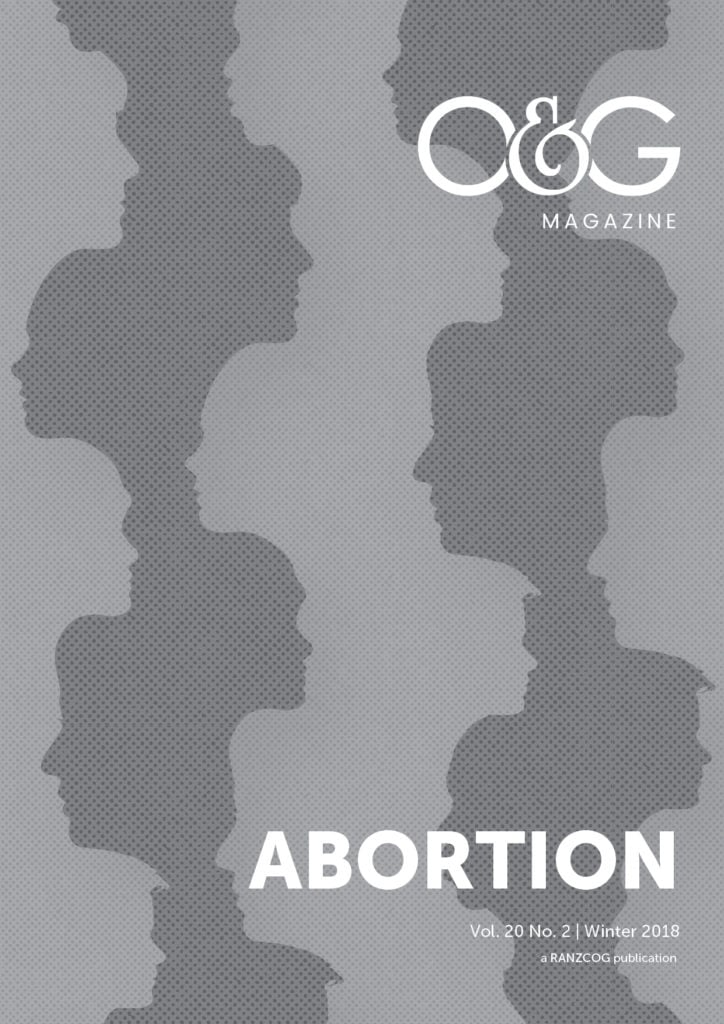It is accepted by people on both sides of the abortion debate that there is a marked difference between the legislation and the way abortion is practised in New Zealand. The Contraception, Sterilisation and Abortion (CSA) Act and the abortion grounds in s187A of the Crimes Act were enacted in 1977 and have not been revised since. They are now outdated and no longer fit for purpose. The Abortion Supervisory Committee, whose job it is to oversee abortion in New Zealand, would be ‘concerned if another decade was to pass and it was still required to govern under such old and outdated language,’ fearing for the ‘medical professionals [who] would be required to operate around processes and language that, in many places, is no longer applicable or practical in our society today.’
The law in New Zealand
Access to abortion is granted to most women in New Zealand purely through ‘benevolent interpretation’ of the law.1 The act of terminating a pregnancy in New Zealand is a crime unless two consultants certify that one of the grounds for a termination applies. If the pregnancy is of less than 20 weeks gestation, it may be lawfully terminated on one of five grounds:
- A serious danger to the life or the physical or mental health of the woman
- A substantial risk that the child will be severely handicapped
- A pregnancy resulting from incest
- A pregnancy resulting from an offence under section 131 of the Crimes Act
- The pregnant woman is severely subnormal
If the pregnancy is more than 20 weeks gestation, the person performing the abortion must believe it is necessary to save the life of the pregnant woman, or prevent serious permanent injury to her physical or mental health. Abortions after 20 weeks make up a minuscule fraction of the total number of abortions performed in New Zealand every year. In 2016, just 76 out of 12,823 abortions took place after 20 weeks, or less than 0.006 per cent. Most abortions are performed on the first ground, in particular, that the certifying consultants believe the pregnancy poses a serious danger to the women’s mental health.
The reality in New Zealand
It seems that this mental health ground is liberally interpreted. The statistics are telling. In 2016, of the 12,823 abortions performed, 12,437 were on the grounds of danger to the mental health of the mother.2 A further 223 terminations were performed on mental health grounds in combination with other grounds, such as fetal anomaly or physical danger to the health of the mother, totalling nearly 99 per cent of abortions in New Zealand. In 2008, in a case brought by Right to Life New Zealand against the Abortion Supervisory Committee, the High Court commented that the high number of women receiving terminations on this ground suggested that ‘certifying consultants collectively are … employing the mental health ground in much more liberal fashion than the legislature intended.’ While such observations might call into question the lawfulness of many abortions, the Courts have consistently held that the regulatory framework put in place leaves it to doctors to determine whether one of the abortion grounds exists. It is a medical decision and the courts will not ‘question a decision actually made in a particular case’.3
Nonetheless, the large number of women seeking an abortion on mental health grounds calls into question the suitability of the current law. The liberal interpretation of this ground puts doctors performing abortions at risk of prosecution for a serious criminal offence. That risk is greatly increased if there is a slight political shift, resulting in a tightening up in the application of the abortion grounds, making access to abortion much harder. Doctors and women are both victims when abortion is illegal. Globally, 21.6 million women experience unsafe abortion a year and 47,000 of these women die from complications.4
Access to abortion
The CSA Act sets out a detailed and lengthy procedure for obtaining and performing an abortion in New Zealand, involving multiple visits to professionals and consultants who must agree that one of the grounds to perform a termination exists. This process results in delays for women seeking abortions. Ashton, McNeill and Silva5 found that, while terminations overwhelmingly occur within the first trimester, New Zealand women consistently access terminations later in the first trimester than other developed countries, which increases the risk of complications. This study found New Zealand women had to wait an average of 24.9 days from first contact with the health system and the date of the termination.
The process also creates access problems. Abortion is not equally available to all women in New Zealand. In 2000, the Abortion Supervisory Committee reported that the laws ‘are not being applied consistently throughout the country.’6 Travel times and difficulties locating two certifying consultants may be contributing to late access to terminations. In 2016, there were only 162 certifying consultants in New Zealand. Living in rural areas makes it much harder to get certifying appointments. These difficulties ‘make [the law] inequitable for poorer women, for women in rural areas, to access the services they need.’7 The Abortion Supervisory Committee’s Annual Report, released in early 2018, draws further attention to the ‘unacceptable and untenable’ fact that Auckland, New Zealand’s largest centre and a sprawling geographical area, has only one main public service.8
Outdated legislation
The law has not kept up with medical advances in New Zealand. The legislation was enacted to prevent the unnecessary death and suffering of women unable to carry a pregnancy. In 1861, abortion was a ‘technically demanding, dangerous surgical procedure’. Medically, it was sensible to restrict it ‘to only the most compelling of cases’.9 By 1977, when our current legislation was enacted, abortion was safer, but ‘still carried significant risks’ 10. It required a surgical procedure and had to be performed in a licensed institution. Today, abortions are much safer and can be performed without any invasive surgical procedure at all, but the law remains stagnant.
In its most recent report, the Abortion Supervisory Committee reiterates that it has made calls for changes to be made to the CSA Act, to bring it in line with modern healthcare delivery and reflect advances in technology. The Committee has emphasised old and unhelpful language in the legislation: throughout, it refers to doctors as ‘he’ and uses terms like the ‘woman’s own doctor’, which no longer reflects modern general practice. This is also demonstrated in the reference to a ‘severely subnormal’ woman, a term which has been removed from other parts of our statute books, due to it being outdated and offensive.11
The law governing abortion is changing in many jurisdictions. It has been removed from the criminal legislation in a number of Australian states, and Bills purporting to do the same have been introduced in recent years in other states and the UK. These jurisdictions attempt to treat abortion as a medical issue, albeit one that is subject to special regulation. The law must evolve to recognise the development in the medical profession and the changes in social attitude that sees abortion as a private medical decision to be made between a woman and her doctor. The issue has now been referred to the New Zealand Law Commission, presenting the first real opportunity for the legislation to be reviewed and bring law into line with practice.
Acknowledgement
I would like to extend my thanks to Prof Nicola Peart, Drs (Leiden) LLM (Cape Town), for her usual calibre of support and extensive knowledge in this area.
References
- Convention on the Elimination of All Forms of Discrimination Against Women. Concluding observations of the Committee on the elimination of discrimination against women. 2012 August:1-12.
- Abortion Supervisory Committee. Report of the Abortion Supervisory Committee 2017. March 2017: 1-29.
- Right To Life New Zealand Inc v The Abortion Supervisory Committee [2012] NZSC 68 at [40].
- World Health Organization. Unsafe abortion: global and regional estimates of the incidence of unsafe abortion and associated mortality in 2008. 2011: 1-66.
- Ashton T, McNeill R, Silva M. Ladies in waiting: the timeliness of first trimester services in New Zealand. Reprod Health. 2010;7:19
- Right To Life New Zealand Inc v The Abortion Supervisory Committee [2008] 2 NZLR 825 (HC).
- O’Connor S. A precarious position: The state of sbortion law in New Zealand. Salient [Internet]. 2017 August [cited 2018 March]. [about 1 p.] Available from http://salient.org.nz/2017/08/a-precarious-position-the-state-of-abortion-law-in-new-zealand/.
- Abortion Supervisory Committee. Report of the Abortion Supervisory Committee 2017. March 2017: 1-29.
- Sheldon S. The decriminalisation of abortion: An argument for modernisation. OJLS 2016; 36(2): 334-365.
- Sood S. Some operative and postoperative hazards of legal termination of pregnancy. BMJ 1971; 4:270.
- Abortion Supervisory Committee. Report of the Abortion Supervisory Committee 2016. March 2016:1-31.





Leave a Reply